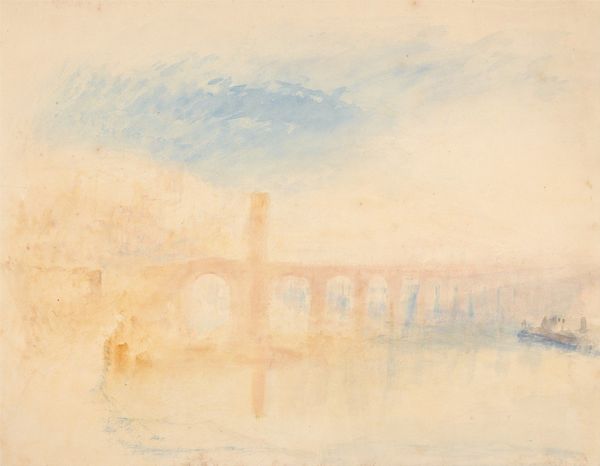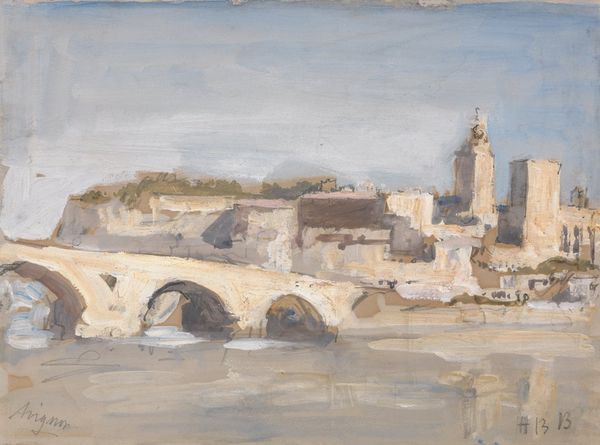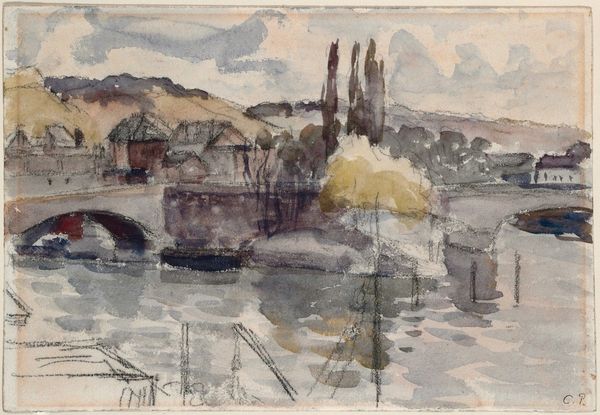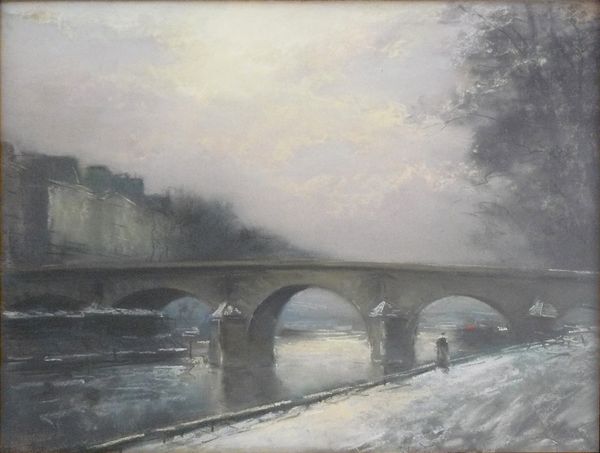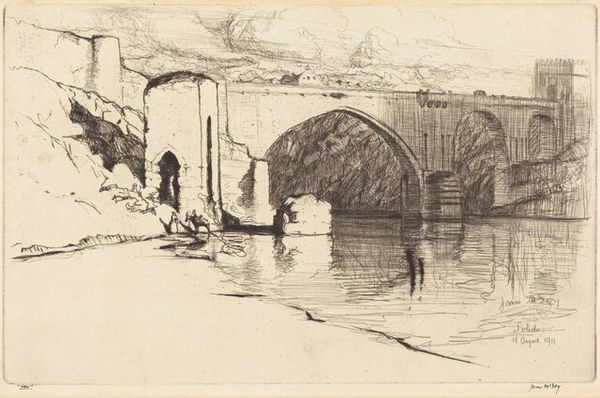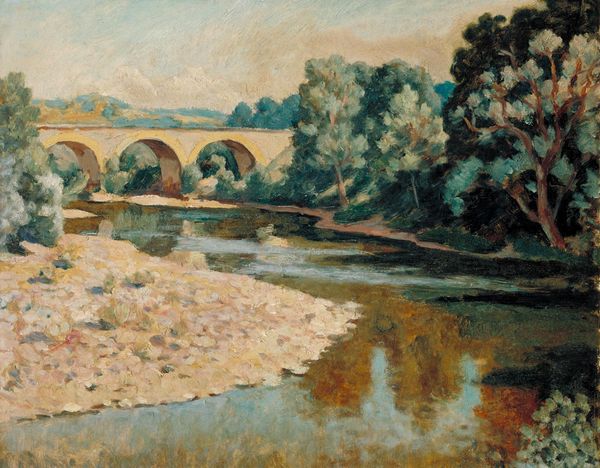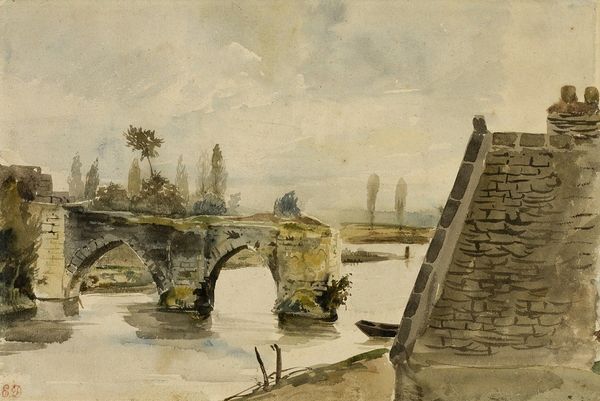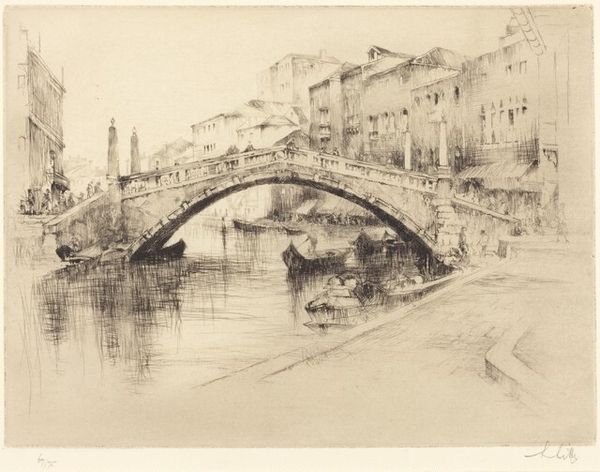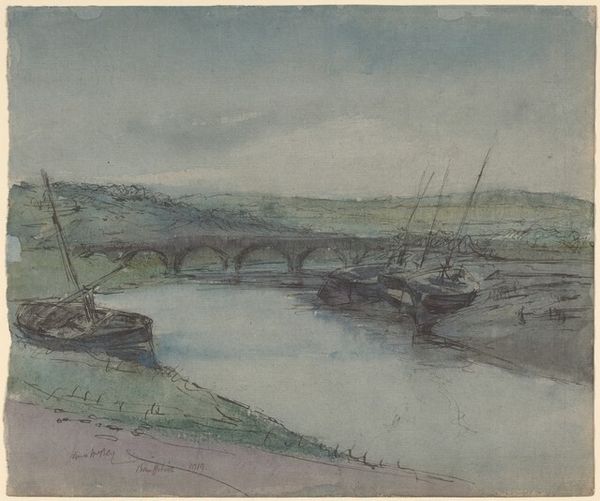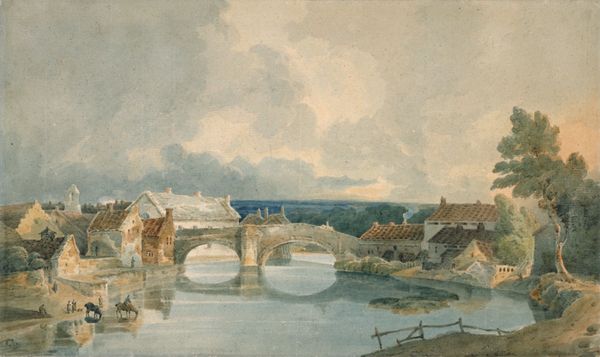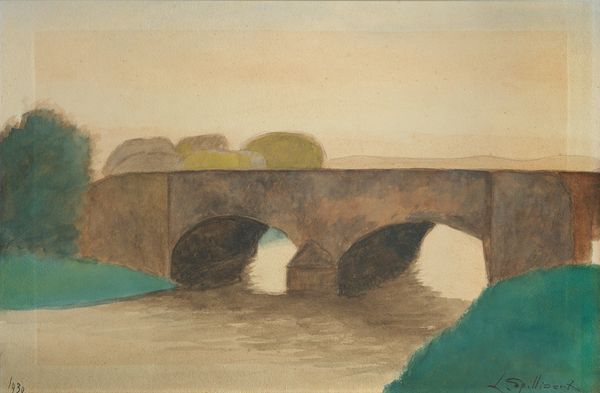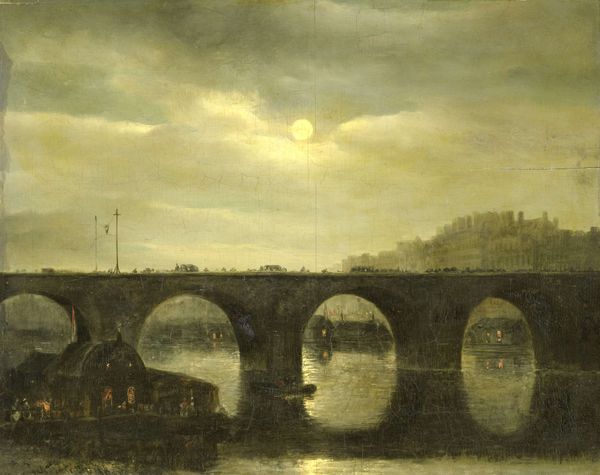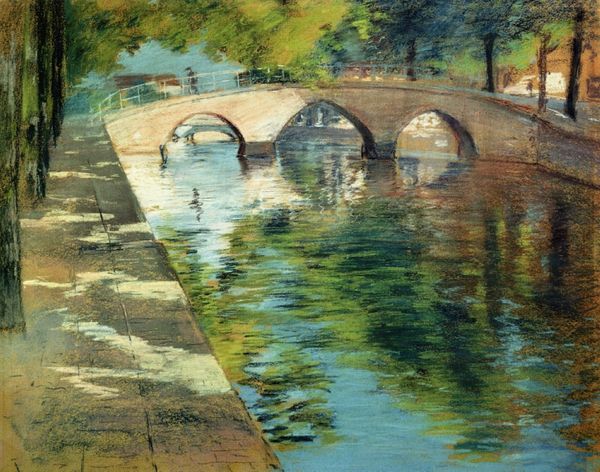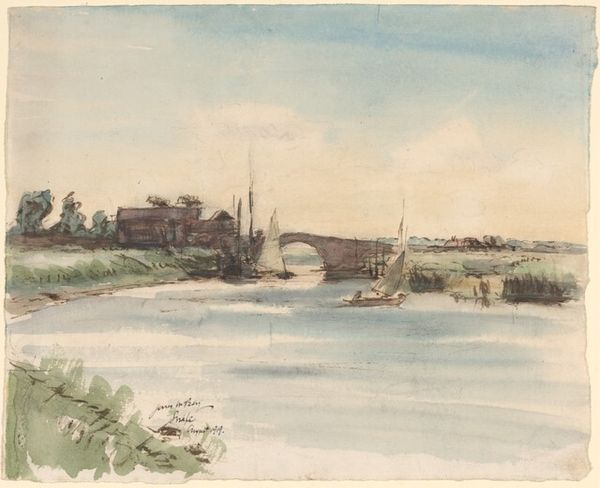
drawing, painting, paper, watercolor
#
drawing
#
painting
#
landscape
#
charcoal drawing
#
paper
#
oil painting
#
watercolor
#
romanticism
#
watercolor
Copyright: Public Domain: Artvee
Editor: Here we have "A Bridge" by Hercules Brabazon Brabazon. It looks like a watercolour painting on paper, though perhaps with some drawing mixed in. The soft colours give it a somewhat dreamy feel, despite depicting such a solid, man-made structure. I'm curious, how do you interpret this work? Curator: It’s interesting you pick up on that dreamy quality. Consider the era this piece likely comes from, sometime in the late 19th century. Romanticism, with its emphasis on emotion and the sublime, was still influential, but so was a growing interest in portraying everyday scenes. Think about how infrastructure projects, like bridges, were seen – symbols of progress, of connecting people. What does this particular bridge, which looks quite old and weathered, tell you? Editor: Well, it doesn't look very modern, like you say. Maybe that the painting is less about progress and more about history, or even the relationship between human construction and nature since there is water and sky taking a good portion of the composition? Curator: Precisely! Brabazon isn’t simply documenting a bridge. He is using watercolor to evoke a specific atmosphere. Watercolors lend themselves to this kind of transience. But why choose such a crumbling, imperfect structure? Remember, this was a period of rapid industrialization, and nostalgia for the past was common in artistic circles. The 'picturesque' qualities of this scene would have resonated with an audience weary of modernity. Think about the market for these kinds of images and where they might be displayed, either a gallery space or a well decorated house. Editor: So, this painting of an old bridge would've been somewhat political? Curator: Political in the sense that it engages with contemporary debates about progress and its costs, absolutely. It also highlights how the art market can be a powerful arena for expressing these ideas. This picturesque aesthetic created and reinforced certain ideas about history, about national identity, and even about who was considered cultured or refined. Editor: That gives me a completely different view of what at first just seemed like a pretty landscape! It shows me how things change, or rather, how social context and historical knowledge change how a person will experience art. Thanks! Curator: Indeed. By exploring the social life of images we see that art, as it enters the public sphere, starts to live in the historical present.
Comments
No comments
Be the first to comment and join the conversation on the ultimate creative platform.
